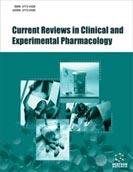[1]
Sreeja V, Prajapati B. Probiotic formulations: Application and status as Pharmaceuticals- A review. Probiotics Anti Microb Prot 2013; 5(2): 81-91.
[2]
Mollet B, Rowland I. Functional foods: At the frontier between food and pharma. Curr Opin Biotechnol 2002; 13(5): 483-5.
[3]
Parvez S, Malik K, Kang A, et al. Probiotics and their fermented food products are beneficial for health. J Appl Microbiol 2006; 100(6): 1171-85.
[4]
Arora M, Baldi A. Regulatory categories of probiotics across the globe: A review representing existing and recommended categorization. Indian J Med Microbiol 2015; 33(5): 2-10.
[5]
Arora M, Baldi A. Selective identification and characterization of potential probiotic strains: A review on comprehensive polyphasic approach. Appl Clin Res Clin Trials and Regul Aff 2017; 4(1): 60-76.
[6]
Kumar M, Kumar R, Poovai PD, et al. Probiotics and multitude of health benefits. J Res Bio 2012; 2: 102-13.
[7]
Arora M, Sharma S, Baldi A. Comparative insight of regulatory guidelines for in USA, India and Malaysia: A critical review. Int J Biotechnol Wellness Ind 2013; 2(2): 51-64.
[8]
Snydman DR. The safety of probiotics. Clin Infect Dis 2008; 46(2): S104-11.
[9]
Ishibashi N, Yamazaki S. Probiotics and safety. Am J Clin Nutr 2001; 73(2): 465S-70S.
[10]
Salminen S, Wright A, Morelli L, et al. Demonstration of safety of probiotics- A review. Int J Food Microbiol 1998; 44: 93-106.
[11]
Sharma S, Arora M, Baldi A. Probiotics in India: Current status and future prospects. Pharm Aspire 2013; 1: 1-12.
[13]
Venugopalan V, Shriner KA, Wong-Beringer A. Regulatory oversight and safety of probiotic use. Emerg Infect Dis 2010; 16(11): 1661-5.
[14]
Amagase H. Current Market place for Probiotics: A Japanese perspective. Clin Infect Dis 2005; 46(2): S73-5.
[15]
Saxelin M. Probiotic formulations and applications, the current probiotics market, and changes in the marketplace: A European perspective. Clin Infect Dis 2008; 46(2): S76-9.
[16]
Yang Y. Scientific substantiation of functional food health claims in China. J Nutr 2008; 138(6): 1199S-205.
[22]
Bailey R. Functional Foods in Japan: FOSHU (Foods for Specified Health Uses) and foods with nutrient function claims. IFT Press: Oxford, United Kingdom 2008; pp. 247.
[23]
Kumar D, Arora M, Baldi A. Understanding industrial practices for pharmaceutical quality management-i, existing approaches and guidelines. Adv Res Pharm Biol 2015; 5(1): 802-11.
[24]
Burdock GA, Carabin IG, Griffiths JC. The Importance of GRAS to the functional food and nutraceutical industries. Toxicology 2006; 221: 17-27.
[25]
Kwak NS, Jukes DJ. Functional foods. Part 1: The development of a regulatory concept. Food Control 2001; 12(2): 99-107.
[26]
Patel D, Dufour Y, Domigan N. Functional food and nutraceutical registration processes in Japan and China: Similarities and diffrences. J Pharm Pharm Sci 2008; 11(4): 1-11.
[27]
Menrad K. Market and marketing of functional food in Europe. J Food Process Eng 2003; 56: 181-8.
[28]
Roberfroid MB. Global view on functional foods: European perspectives. Br J Nutr 2002; 88(2): S133-8.
[29]
Arora M, Baldi A. Good manufacturing practice regulations for probiotic based pharmaceuticals: Current scenario and suggestive recommendations. Appl Clin Res Clin Trials Regul Aff 2015; 2(3): 165-75.
[30]
Fukushima Y, Hurt E. Probiotics health claims in Japan and Europe. Caister Academic Press: Norfolk, UK 2011; pp. 253-81.
[31]
Shimizu T. Health claims on functional foods: The Japanese regulations and an international comparison. Nutr Res Rev 2003; 16(2): 241-52.
[32]
Roberfroid MB. Concepts and strategy of functional food science: The European perspective. Am J Clin Nutr 2000; 71(6): S1660-4.
[33]
Roberfroid MB. A European consensus of scientific concepts of functional foods. Nutrition 2000; 7(16): 689-91.
[34]
Wright AV. Regulating the safety of probiotics-The European approach. Curr Pharm Des 2005; 11(1): 17-23.
[35]
Kwak NS, Jukes DJ. Functional foods. Part 2: The impact on current regulatory terminology. Food Control 2001; 12(2): 109-17.
[36]
Anadón A, Martínez-Larrañaga MR, Martínez MA. Probiotics for animal nutrition in the European Union. Regulation and safety assessment. Regul Toxicol Pharmacol 2006; 45(1): 91-5.
[37]
Coppens P, Fernandes M, Pettman S. European regulations on nutraceuticals, dietary supplements and functional foods: A framework based on safety. Toxicology 2006; 221(1): 59-74.
[38]
Siro I, Kapolna E, Kapolna B, Lugasi A. Functional food: Product development, marketing and consumer acceptance - A review. Appetite 2008; 51(3): 456-67.
[39]
Sybesma W, Hugenholtz J, DeVos WM, Smid EJ. Safe use of genetically modified lactic acid bacteria in food: Bridging the gap between consumers, green groups, and industry. Electron J Biotechnol 2006; 9(4)
[40]
Degnan FH. The US food and drug administration and probiotics: Regulatory categorization. Clin Infect Dis 2008; 46(2): S133-6.
[41]
Mattia A, Merker R. Regulation of probiotic substances as ingredients in foods: Premarket approval or “generally recognized as safe” notification. Clin Infect Dis 2008; 46(2): S115-8.
 12
12 2
2



